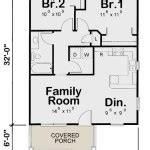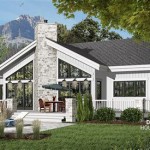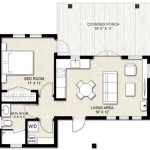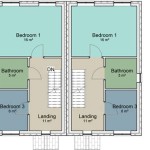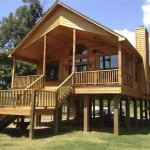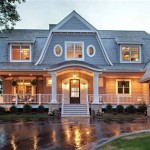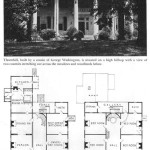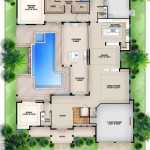2nd Floor House Plans: Design And Build Your Dreams
The desire to expand living space often leads homeowners to consider adding a second floor to their existing residence. This undertaking requires careful planning, innovative design, and a thorough understanding of structural considerations. Effective 2nd floor house plans are essential for a successful project that meets the needs of the occupants and adheres to local building codes.
Designing a second floor is not merely about adding square footage; it's about creating a cohesive and functional extension of the existing home. It demands a holistic approach that considers the architectural style, the structural integrity of the existing foundation and walls, and the specific lifestyle requirements of the inhabitants. A well-conceived 2nd floor plan seamlessly integrates with the original structure, enhancing both its aesthetic appeal and practical utility.
Key Considerations Before Embarking on the Design Process
Before diving into the specifics of 2nd floor house plans, several key considerations must be addressed. These factors will significantly influence the design process and overall feasibility of the project. Ignoring these preliminary steps can lead to costly mistakes and project delays.
Structural Integrity Assessment: A crucial first step is to have a qualified structural engineer assess the existing foundation and walls of the house. This assessment will determine if the current structure can support the added weight of a second floor. Factors such as the type of foundation (slab, crawl space, or basement), the composition of the walls (wood frame, brick, or concrete), and the overall condition of the structure will be evaluated. Reinforcements might be necessary, adding to the budget and complexity of the project. Ignoring this step can lead to structural instability and potential safety hazards.
Zoning Regulations and Building Codes: Local zoning regulations and building codes dictate permissible building heights, setbacks, and other restrictions. Researching these regulations is imperative to ensure that the proposed second floor complies with all legal requirements. Failure to adhere to these regulations can result in fines, delays, and even the forced removal of the added structure. Engage with local authorities early in the process to understand the specific requirements and avoid potential roadblocks.
Budget Allocation: Establishing a realistic budget is essential for managing the financial aspects of the project. Construction costs can vary significantly depending on the size and complexity of the second floor, the materials used, and the labor rates in the area. Obtain multiple quotes from reputable contractors to get a clear understanding of the potential expenses. Include contingency funds in the budget to cover unexpected costs or changes that may arise during the construction process.
Elements of Effective 2nd Floor House Plans
Once the initial considerations have been addressed, the focus shifts to the design aspects of the 2nd floor house plans. A well-designed plan optimizes space utilization, enhances functionality, and complements the existing architectural style of the home.
Spatial Planning and Room Layout: The layout of the second floor should be carefully planned to maximize space and functionality. Consider the specific needs of the occupants when determining the number and size of bedrooms, bathrooms, and other living areas. Strategic placement of windows and doors can enhance natural light and ventilation. The flow of traffic between rooms should be smooth and intuitive, avoiding cramped or awkward spaces. Consider the orientation of the house and the surrounding environment to optimize views and minimize sun exposure.
Staircase Design and Placement: The staircase serves as the primary access point to the second floor and its design and placement are critical considerations. The location of the staircase will impact the layout of both the first and second floors. The staircase should be designed to meet building code requirements for width, rise, and run. Consider the architectural style of the house when selecting the staircase design. Options include straight staircases, curved staircases, and spiral staircases. The staircase should be both functional and aesthetically pleasing, seamlessly integrating with the overall design of the home.
Integration with Existing Structure: The 2nd floor design should seamlessly integrate with the existing structure, both aesthetically and structurally. The roofline, exterior finishes, and window styles should be carefully matched to the existing architecture. The structural connections between the first and second floors should be meticulously planned to ensure stability and prevent future problems. This may involve reinforcing walls, adding support beams, or modifying the existing framing. The goal is to create a cohesive and harmonious design that enhances the overall appeal of the home.
Navigating the Design and Build Process
The process of designing and building a second floor requires careful management and coordination. Engaging with experienced professionals is crucial for a successful outcome.
Selecting an Architect or Designer: An architect or designer can provide invaluable expertise in developing 2nd floor house plans that meet the specific needs and preferences of the homeowner. They can help navigate the complexities of building codes, zoning regulations, and structural considerations. A skilled architect can also provide creative design solutions that maximize space, enhance functionality, and improve the aesthetic appeal of the home. Carefully evaluate the qualifications and experience of potential architects or designers before making a selection. Review their portfolios and check references to ensure they have a proven track record of successful projects.
Choosing a Contractor: Selecting a reputable and experienced contractor is essential for ensuring the project is completed on time, within budget, and to the highest quality standards. Obtain multiple bids from different contractors and compare their pricing, qualifications, and experience. Check their references and review their previous work. Ensure the contractor is licensed and insured. A detailed contract should be established that outlines the scope of work, payment schedule, and warranty information. Regular communication and collaboration with the contractor are crucial for keeping the project on track and addressing any issues that may arise.
Managing the Construction Phase: The construction phase can be disruptive to the household, so careful planning and communication are essential. Establish clear lines of communication with the contractor and regularly monitor the progress of the work. Address any concerns or issues promptly and professionally. Be prepared for unexpected delays or challenges that may arise during the construction process. Maintaining a positive and collaborative relationship with the contractor will help ensure a smooth and successful project.
Integrating sustainable design principles into 2nd floor house plans is increasingly important for reducing environmental impact and creating a more energy-efficient home. Consider incorporating features such as solar panels, high-performance windows, and energy-efficient insulation. These features can reduce energy consumption, lower utility bills, and enhance the overall comfort of the home. Sustainable materials, such as recycled lumber and low-VOC paints, can also be incorporated to minimize the environmental footprint of the project.
Ensuring compliance with accessibility standards is a crucial aspect of modern 2nd floor house plans. Consider incorporating features such as wider doorways, grab bars in bathrooms, and a stair lift or elevator if necessary. These features can make the home more accessible to individuals with disabilities or mobility limitations, allowing them to live comfortably and independently. Consulting with an accessibility expert can help ensure that the design meets all relevant standards and guidelines.
Adding a second floor can significantly increase the value of a home, but it’s crucial to consider the potential return on investment. Factors such as the location of the property, the condition of the existing structure, and the overall design of the addition will influence the resale value. Researching comparable sales in the area can provide insights into the potential market value of the renovated home. It's also important to consider the long-term needs of the homeowner. If the goal is to create a more functional and comfortable living space for the foreseeable future, then the value of the added convenience and enjoyment may outweigh the financial considerations.
Creating a digital 3D model of the proposed second floor can be a valuable tool for visualizing the design and identifying potential problems before construction begins. 3D modeling software allows homeowners to explore different design options, experiment with layouts, and visualize the finished product in a realistic setting. This can help in making informed decisions about the design and ensure that the final result meets their expectations. It can also facilitate communication with the architect and contractor by providing a clear and detailed representation of the project.
Soundproofing the second floor can significantly enhance the comfort and privacy of the home. Consider incorporating sound-dampening materials into the walls, floors, and ceilings to reduce noise transmission between rooms. This is particularly important if the second floor will be used as bedrooms or home offices. Soundproofing measures can also help minimize noise from outside sources, such as traffic or neighbors. Effective soundproofing can create a more peaceful and relaxing living environment.
The addition of a second floor can also provide an opportunity to upgrade the existing electrical and plumbing systems of the home. Older homes may have outdated wiring or plumbing that is not adequate for modern needs. Consider upgrading these systems during the construction process to ensure they are safe, efficient, and capable of handling the increased demand. This can include replacing old wiring, installing new plumbing fixtures, and upgrading the electrical panel. These upgrades can improve the safety and functionality of the home and prevent future problems.
Landscaping around the property can also enhance the aesthetic appeal of the renovated home and create a more inviting outdoor space. Consider incorporating landscaping elements that complement the design of the second floor and enhance the overall curb appeal. This can include planting trees, shrubs, and flowers, creating walkways and patios, and installing outdoor lighting. A well-designed landscape can create a welcoming atmosphere and increase the value of the property.
The project must be monitored and inspected at various stages to ensure compliance with building codes and quality standards. Engage with local building inspectors to schedule inspections and address any deficiencies that may be identified. Regular monitoring and inspection can help prevent costly mistakes and ensure that the project is completed safely and to the required standards.

2 Story House Plans Blog Dreamhomesource Com

2 Story House Plans Blog Dreamhomesource Com

10 Stunning Modern 2 Floor House Design Ideas For 2025

2 Story House Plans Blog Dreamhomesource Com

Luxury 2 Story Modern 5 Bedroom House Plan 1817

Simple 2 Y House Design With Floor Plan 32 X40 4 Bed Room

2 Story House Plans Blog Dreamhomesource Com

Learn How To Design Two Story Homes With Planner 5d

2 Story House Plans Small Mansion Farmhouse Modern More Blog Floorplans Com

Two Story House Plan Examples
Related Posts

